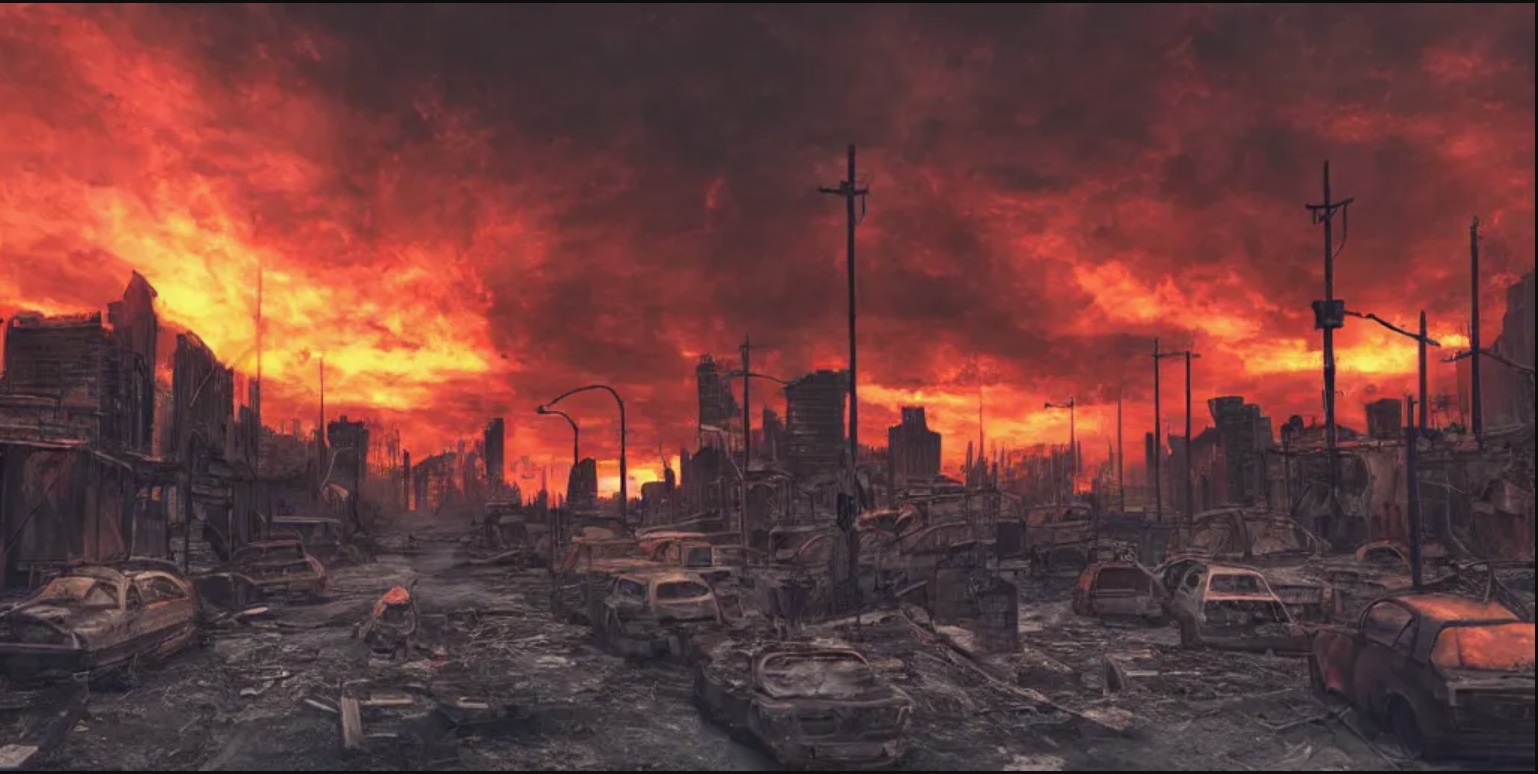As my chosen aesthetic for my upcycle project is the Shinto aesthetic which essentially revolves around nature and life, I think the opposite of this aesthetic would revolve around post-apocalyptic concepts or design as this involves the absence of life and usually nature.

Post-apocalyptic ideas often evoke a stark contrast between the harmony and vitality that is seen with the Shinto belief. They instead focus on portraying worlds that are ravaged by a large catastrophe, leaving humans and nature to struggle amongst the decay and desolation. In this type of world, the usually lush forests and calm rivers are replaced with barren wastelands and the ruins of civilization. Other common themes of post-apocalyptic worlds include gray and brown colors with dull muted tones in any sort of environment. There are also lots of ruined buildings or abandoned cities that are usually present in lots of post-apocalyptic imagery.

In contrast to the reverence for life and the divine that is found in the Shinto Belief, post-apocalyptic themes usually include ideas of danger, survival, resilience, and the hubris of men. These stories typically involve humanity facing catastrophe as a result of the disruption of the natural order of the world, confronting the harsh realities of the world when it is stripped of the safety of the modern world.
The idea of apocalypses has been a concept that has been explored by humans spanning several millennia. The oldest texts that contain apocalyptic ideas are ancient Mesopotamian texts that date back to around 2000-1500 BCE. They described large disasters like floods that were sent by gods to punish humanity for their sins. This theme is also seen in biblical texts in stories such as Noah’s Ark from the bible and the Genesis Flood from the Quran.

If I were to try and adapt my project of origami cranes to this aesthetic, I would try and use old scrap paper that has hints of aging to craft some animals. I would also try to tear some pieces of the origami itself to portray the concepts of ruin and decay that are prevalent in post-apocalyptic imagery.

My sketch above shows what I would be planning on doing if I were to switch my aesthetic to the post-apocalyptic theme. It would have some tears either from the paper or from me trying to impart some of that ruin into the crane itself. I also think it would still work to use animals like cranes as having them seem destroyed helps to demonstrate the desolation that is shown in apocalyptic worlds, especially in nature itself. However there are also some apocalyptic worlds where nature begins to heal due to the absence of humans to exploit the environment, which also works with this idea.
Picture Source:
- https://stock.adobe.com/search?k=apocalyptic+wasteland
- https://www.istockphoto.com/photo/wasteland-gm1392133809-448478369
- https://en.wikipedia.org/wiki/Noah%27s_Ark
Thumbnail Source:
https://openart.ai/discovery/sd-1007208907355213864
Information Source:
- https://en.wikipedia.org/wiki/Noah%27s_Ark
- https://en.wikipedia.org/wiki/Apocalyptic_and_post-apocalyptic_fiction
- https://aesthetics.fandom.com/wiki/Post-Apocalyptic


4 Comments. Leave new
Hi David,
This is a great deep dive into the opposite aesthetic to your project and it was really interesting to learn that humans since the start of society have been preparing for its collapse. I was wondering if maybe a welded crane with brutal weld marks would also be a cool solution to achieving this aesthetic.
Hey Colton,
Thanks for reading my post! Yeah, the history of humans daydreaming about apocalypses was very history as we seem to be obsessed with the possibility of our extinction. The welded crane idea sounds pretty awesome.
David, I think this a perfect analysis on the opposite aesthetic to Shinto, based on your definition of it. The post-apocalyptic aesthetic and its dreary, lifeless themes are a direct contrast to the beautiful harmony between life and nature that Shinto emphasizes. I wonder if adding slight burn marks and carbonization to your origami cranes would also make it follow the post apocalyptic aesthetic.
Hey Jadin,
Thanks for the comments! The burn marks seem like it would add an interesting look to the cranes. Maybe, I could even take a photo of it while it is burning to capture that more chaotic aesthetic.